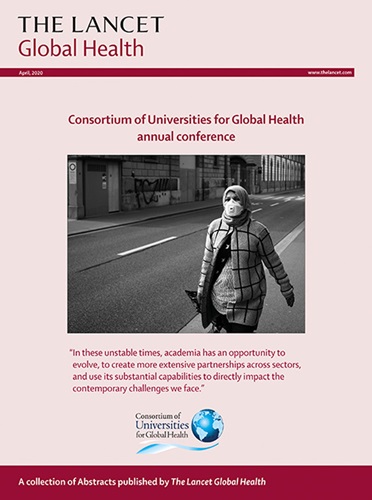Global, regional, and national health-care inefficiency and associated factors in 201 countries, 1995-2022: a stochastic frontier meta-analysis for the Global Burden of Disease Study 2023.
IF 19.9
1区 医学
Q1 PUBLIC, ENVIRONMENTAL & OCCUPATIONAL HEALTH
引用次数: 0
Abstract
BACKGROUND All governments face pressure to maximise the impact of their health budget. We aimed to measure health spending inefficiency for 201 countries from 1995 to 2022, estimate the cost of one additional year of healthy life, and assess contextual factors associated with health spending inefficiency. METHODS We extracted data from the Global Burden of Diseases, Injuries, and Risk Factors Study 2023 and the Financing Global Health 2024 project to estimate health spending inefficiency using a non-linear stochastic frontier meta-analysis model designed to assess health-adjusted life expectancy (HALE). This model produced a frontier that represents the best possible HALE for a given level of health spending. Inefficiency scores were measured as the distance between a country's HALE and the frontier at that country's level of spending. We used the slope of the frontier to estimate the cost of one additional year of healthy life, and we regressed inefficiency scores on contextual factors and policy variables to measure their association with health spending inefficiency. FINDINGS The relationship between health spending and HALE was positive for all levels of spending, although health spending inefficiency existed in most countries. Globally, health spending inefficiency decreased from 1995 to 2019, increased considerably in 2020 and 2021 due to the COVID-19 pandemic, and recovered substantially in 2022. We found decreasing returns to additional health spending, with the cost of one additional health-adjusted life-year varying from US$92 (95% uncertainty interval 43-239) per capita for a country spending $100 per capita to $11 213 (8031-57 754) per capita for a country spending $5000 per capita. More efficient spending was associated with better governance, having a higher percentage of health expenditure from the government, infrastructure that facilitates access to and delivery of health care, and higher uptake of preventive care measures. INTERPRETATION Expanding government-provided health-care coverage would decrease the inefficiency of the health-care system. Countries should also focus on strengthening democracy, building infrastructure, and increasing the use of, and access to, preventive care. FUNDING Bill & Melinda Gates Foundation.1995-2022年201个国家的全球、区域和国家卫生保健效率低下及其相关因素:2023年全球疾病负担研究的随机前沿荟萃分析
背景所有政府都面临着最大限度发挥卫生预算影响的压力。我们旨在衡量1995年至2022年201个国家的卫生支出效率低下,估计额外一年健康生活的成本,并评估与卫生支出效率低下相关的背景因素。方法我们从全球疾病、伤害和风险因素负担研究2023和融资全球卫生2024项目中提取数据,使用旨在评估健康调整预期寿命(HALE)的非线性随机前沿荟萃分析模型来估计卫生支出效率低下。该模型产生了一个边界,代表了给定卫生支出水平下可能的最佳HALE。低效率分数是用一个国家的HALE与该国支出水平的边界之间的距离来衡量的。我们使用边界斜率来估计额外一年健康生活的成本,并对环境因素和政策变量的低效率得分进行回归,以衡量它们与卫生支出低效率的关联。结果:尽管大多数国家的卫生支出效率低下,但卫生支出与HALE之间的关系在所有水平的支出中都是正的。在全球范围内,1995年至2019年期间,卫生支出效率低下的情况有所减少,但在2020年和2021年因COVID-19大流行而大幅增加,并在2022年大幅恢复。我们发现额外卫生支出的回报在下降,一个额外健康调整生命年的成本从人均支出100美元的国家的人均92美元(95%不确定区间43-239)到人均支出5000美元的国家的人均11213美元(8031- 57754)不等。更有效的支出与更好的治理、更高比例的政府保健支出、便利获得和提供保健的基础设施以及更高程度地采用预防性保健措施有关。扩大政府提供的医疗保健覆盖范围将减少医疗保健系统的低效率。各国还应注重加强民主,建设基础设施,增加预防保健的使用和获得。资助比尔和梅林达·盖茨基金会。
本文章由计算机程序翻译,如有差异,请以英文原文为准。
求助全文
约1分钟内获得全文
求助全文
来源期刊

Lancet Global Health
PUBLIC, ENVIRONMENTAL & OCCUPATIONAL HEALTH-
CiteScore
44.10
自引率
1.20%
发文量
763
审稿时长
10 weeks
期刊介绍:
The Lancet Global Health is an online publication that releases monthly open access (subscription-free) issues.Each issue includes original research, commentary, and correspondence.In addition to this, the publication also provides regular blog posts.
The main focus of The Lancet Global Health is on disadvantaged populations, which can include both entire economic regions and marginalized groups within prosperous nations.The publication prefers to cover topics related to reproductive, maternal, neonatal, child, and adolescent health; infectious diseases (including neglected tropical diseases); non-communicable diseases; mental health; the global health workforce; health systems; surgery; and health policy.
 求助内容:
求助内容: 应助结果提醒方式:
应助结果提醒方式:


